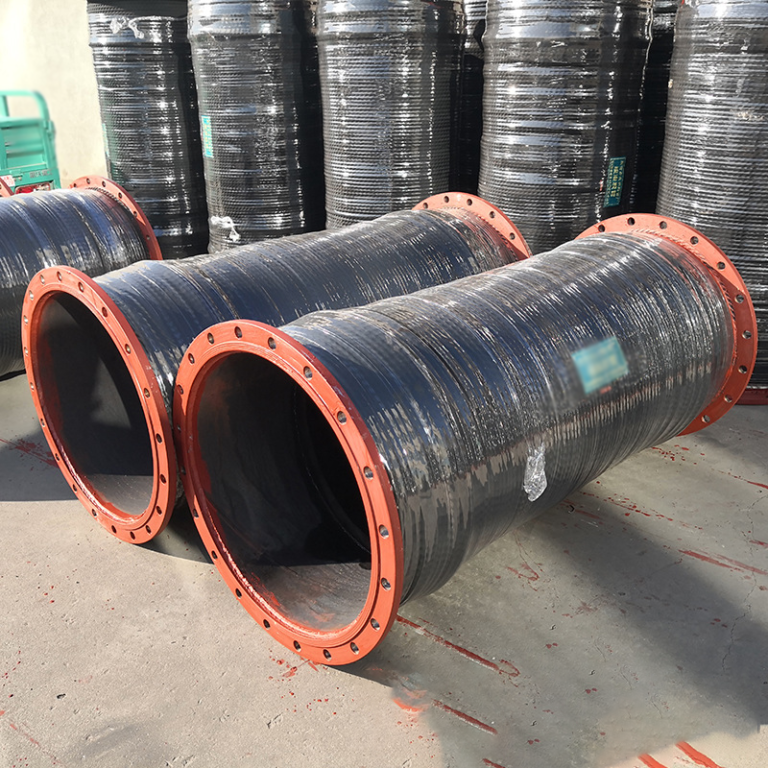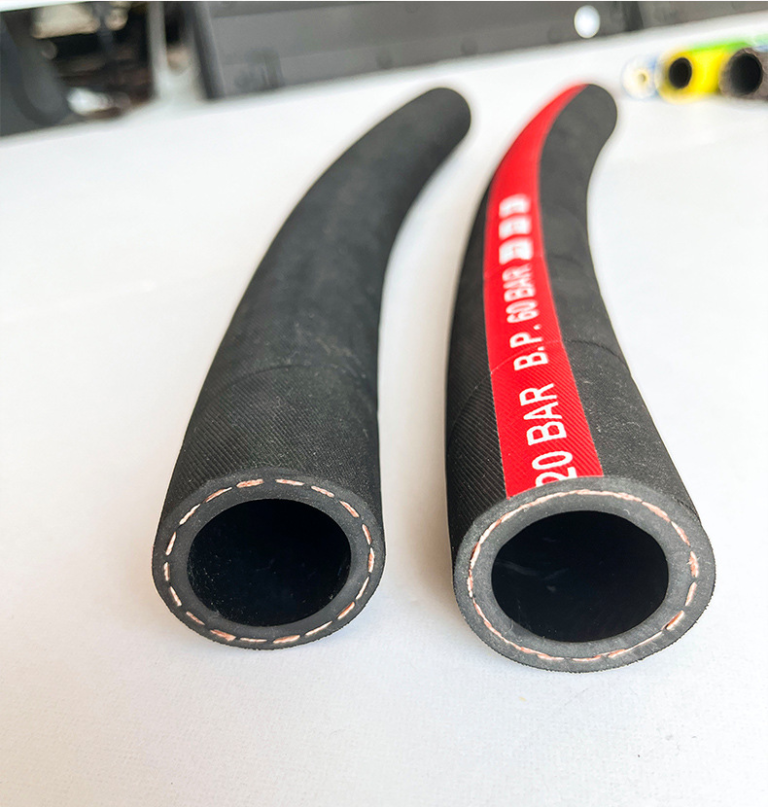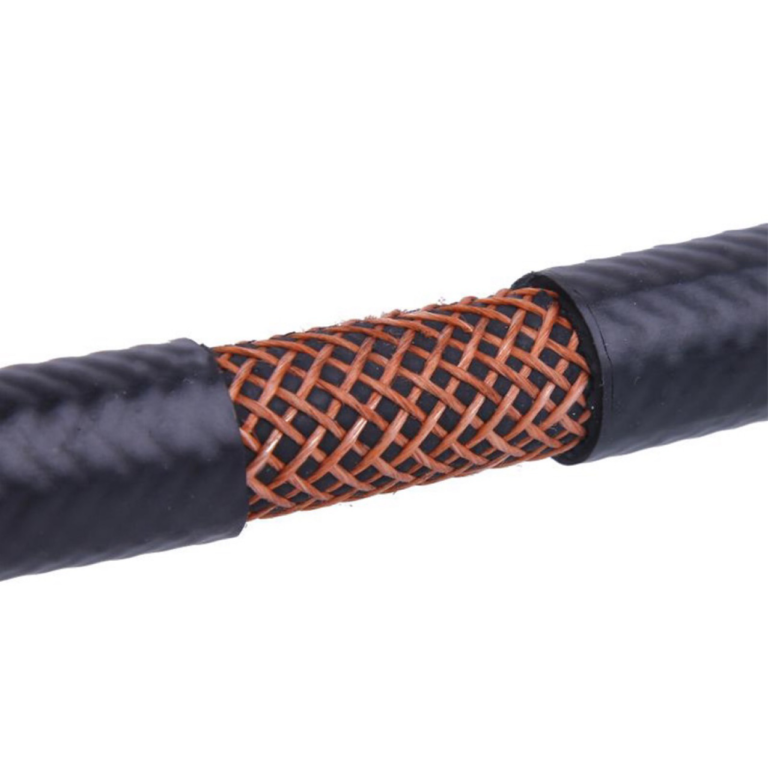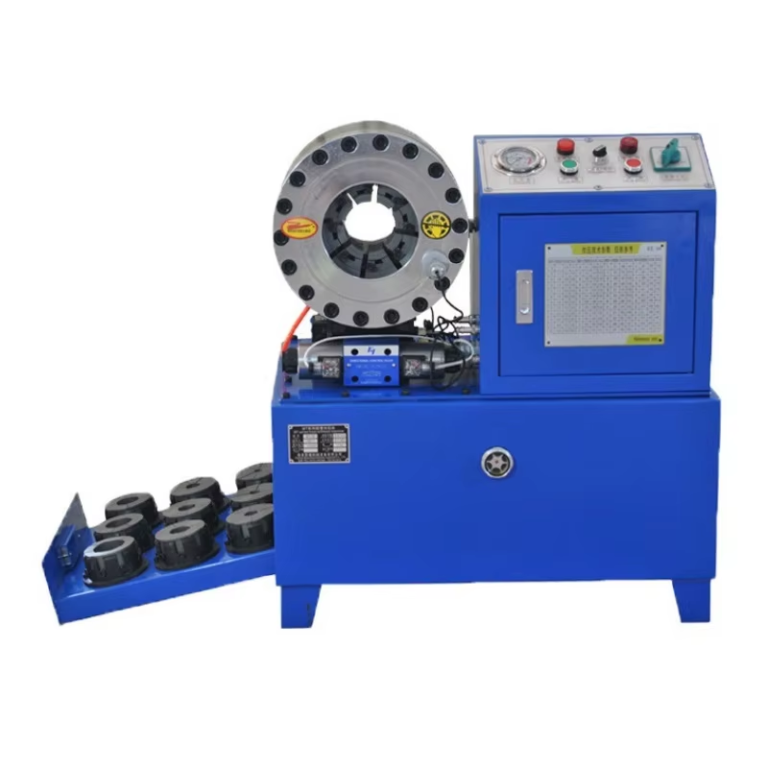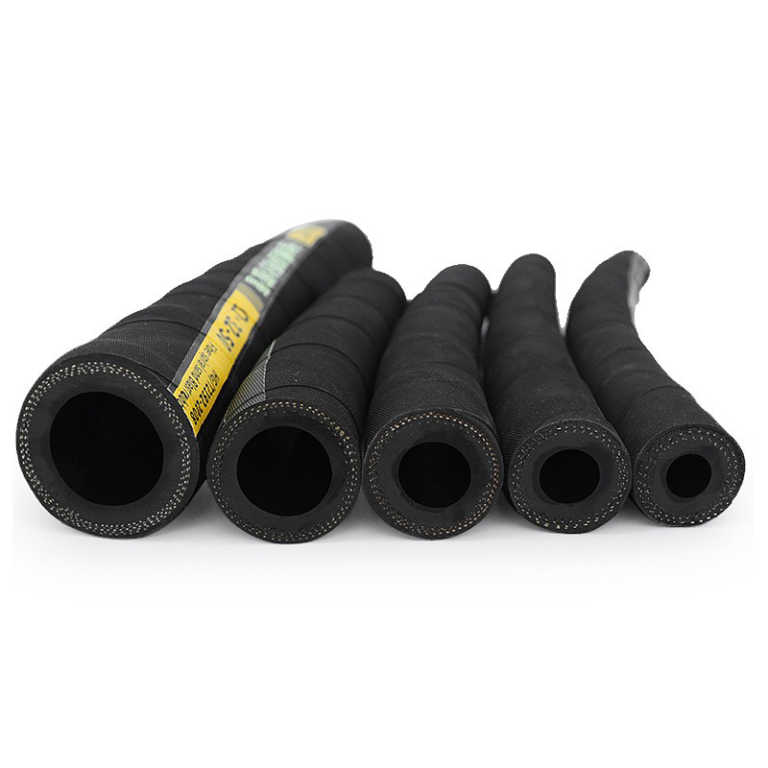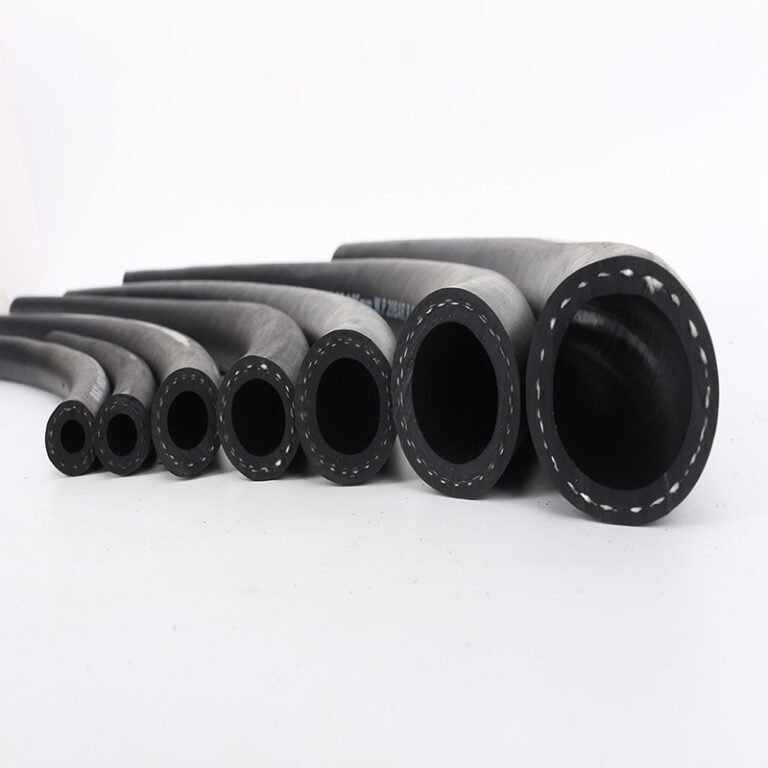What factors should be considered in the design of hydraulic hoses?
After clarifying the performance of the hydraulic system, the service life of equipment and components, and the cost budget requirements, the hydraulic hose assembly required for the installation of the hydraulic system design generally includes five elements: size, temperature, application, medium, and pressure. 1. The size hydraulic system transfers energy by transmitting fluids of different pressures and flow rates. The size selection of hoses and fittings is crucial in order to minimize pressure loss and avoid system damage caused by excessive heating. The inner diameter d of the pipeline is generally selected according to the flow rate, where qv is the liquid flow rate m3/s; V is the flow velocity in m/s.
Recommended flow rate: Take 1-2 m/s for the suction nozzle (usually below 1 m/s); The pressure oil pipe should be set at 3-6 m/s (in the case of high pressure, short pipeline or low hydraulic oil viscosity, the larger value can be taken, otherwise the smaller value can be taken, and in local or special situations, v ≤ 10 m/s can be taken); Take 1.5~2.5m/s for the return pipe. In addition to using calculation formulas, it is also possible to select connections based on the relationship between the flow rate, flow velocity, and inner diameter of the pipeline in the calculation diagram.
2. When selecting temperature hoses, the temperature of the medium conveyed inside the hose and the temperature of the working environment outside the hose should be considered. The product catalog of general manufacturers provides the working temperature range of the products, and when selecting, hoses within the temperature range should be selected based on the parameters. The external temperature of the working environment of the hose affects the service life of the hose assembly. In this condition, users need to increase the frequency of pipeline inspections. If the outer rubber layer of the hose becomes brittle or cracked, the hose or hose assembly must be replaced. Under the comprehensive working conditions of high temperature and high pressure, the service life of the hose will be greatly shortened. At this point, it is advisable to choose a pipe with an outer adhesive layer that is resistant to high temperatures. Choose hoses with the HT (High Temperature) label or hose code ending in 6 from Parker hoses, such as the 661HT, 881HT, 436, 836 series hoses. Under low temperature conditions, low temperature will reduce the flexibility of rubber products. In extreme cold climates, deep freezing and other working conditions, the selection of hoses requires both insulation and cold prevention measures for the pipeline, as well as the use of low temperature resistant hoses, such as the 371LT and 772LT hoses with the Parker LT (Low Temperature) label.
3. The application part is relatively intuitive and easy to choose, such as oil suction, pressure, and return pipelines. In the oil suction circuit, it is necessary to consider the selection of hoses that can withstand negative pressure and vacuum conditions. The pipelines of air conditioning and refrigeration systems need to consider hose products with characteristics such as medium temperature and corrosiveness. In metallurgy and some high-temperature open flame working conditions, choose high-temperature resistant and fireproof outer rubber layer or add fireproof sheath outside the pipeline. The pipelines in CNC machine tools and processing equipment are installed in the drag chain, constantly rubbing and contacting with the surrounding area during operation. Choose outer rubber layer hose products with wear-resistant outer rubber layer or ultra wear-resistant rubber layer. Taking into account all the comprehensive factors involved in product selection is helpful in choosing the right product, ensuring safe use and product lifespan, as well as optimizing the overall cost of product use.
4. The compatibility of the medium fluid is determined by the designer’s selection of hose products with compatibility based on the fluid medium of the system. For example, if the medium is phosphate hydraulic oil, the Parker hose series with a suffix of 4 is selected, and the inner rubber layer is generally made of EPDM material, such as series 804, 304, 424, 774 hoses.
5. The selection of pressure hoses and fittings must ensure that the maximum working pressure of the hose assembly is ≥ the maximum pressure of the system. The pulse or peak pressure of the system must be less than the maximum working pressure of the hose. Designers often overlook the applicable pressure range of hose joints when selecting and designing, resulting in system failures. This is because the pressure range of a hose assembly is determined by the minimum working pressure among the components that make up the hose assembly. Therefore, when selecting a hose assembly, the working pressure of the joint and hose must be considered comprehensively.


